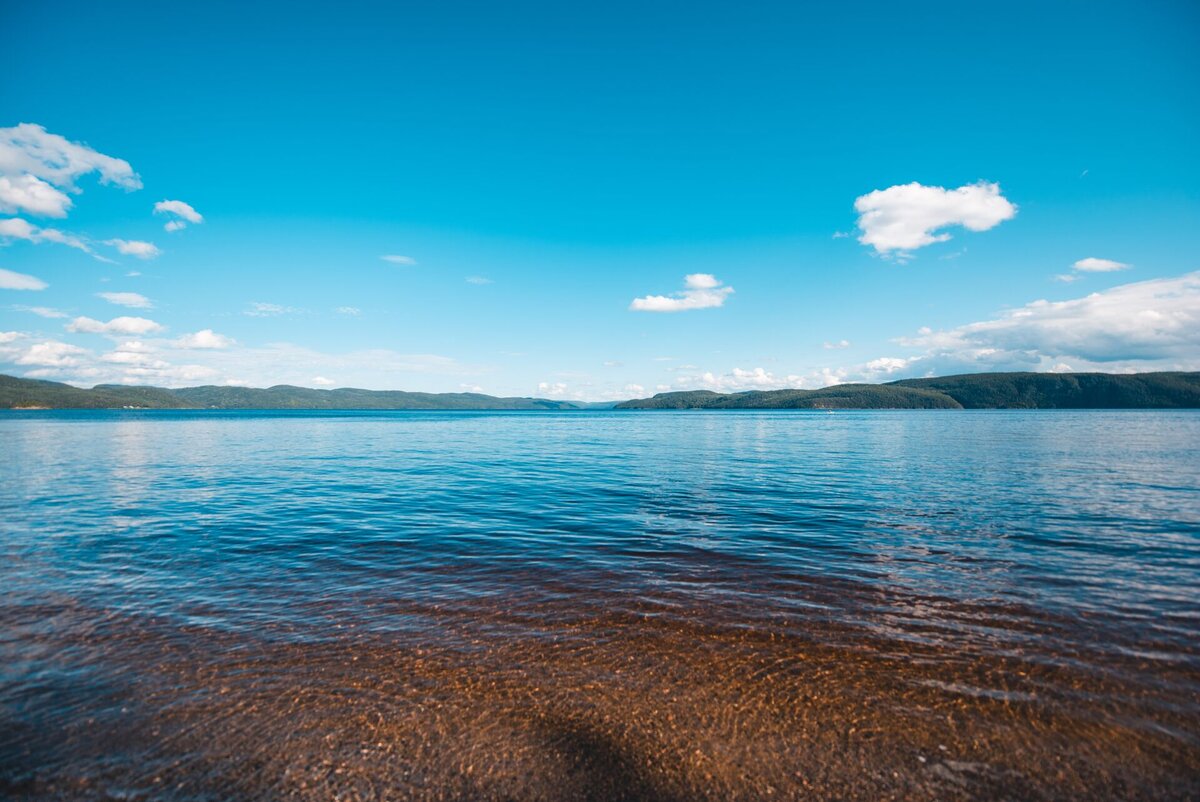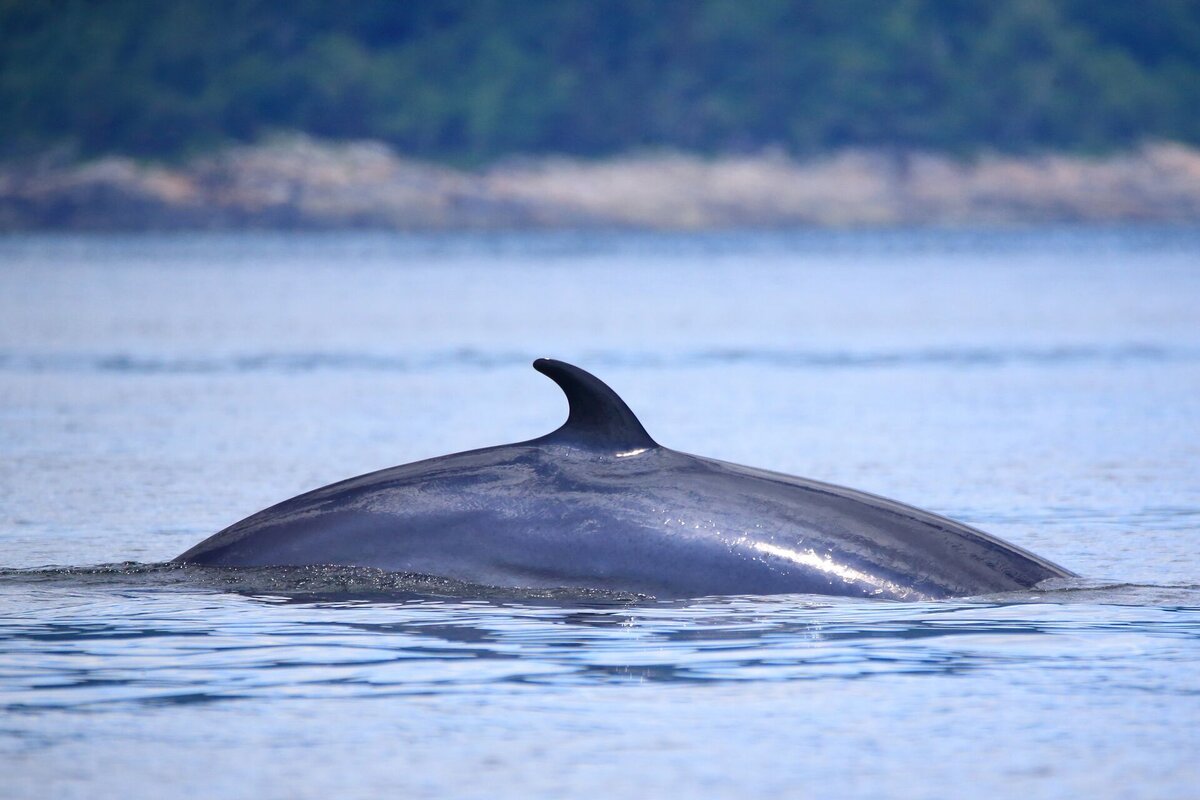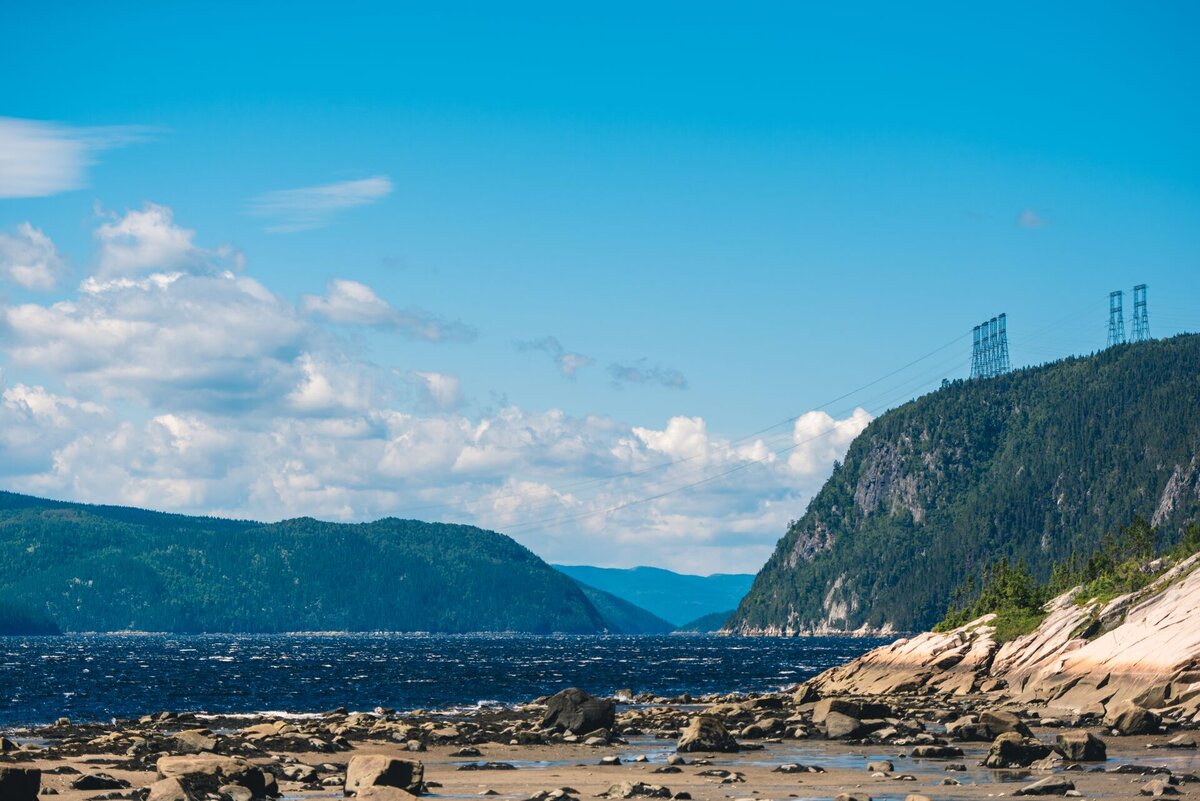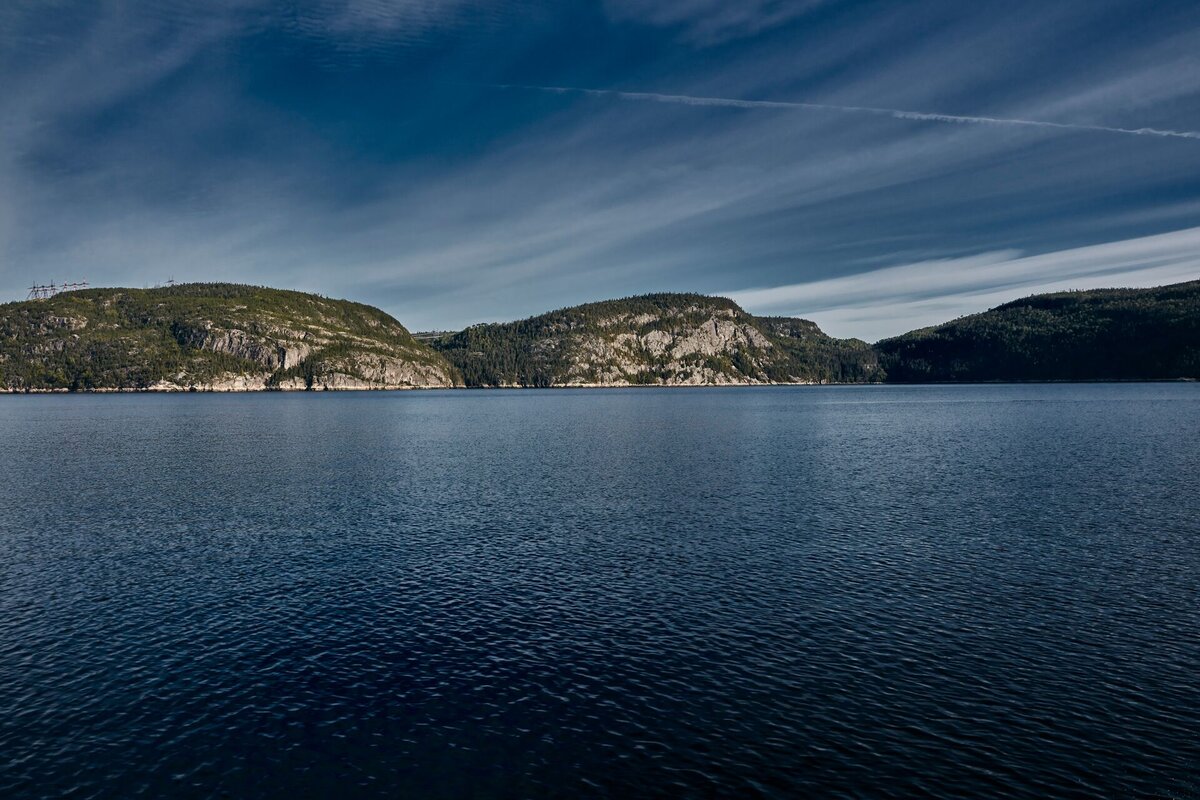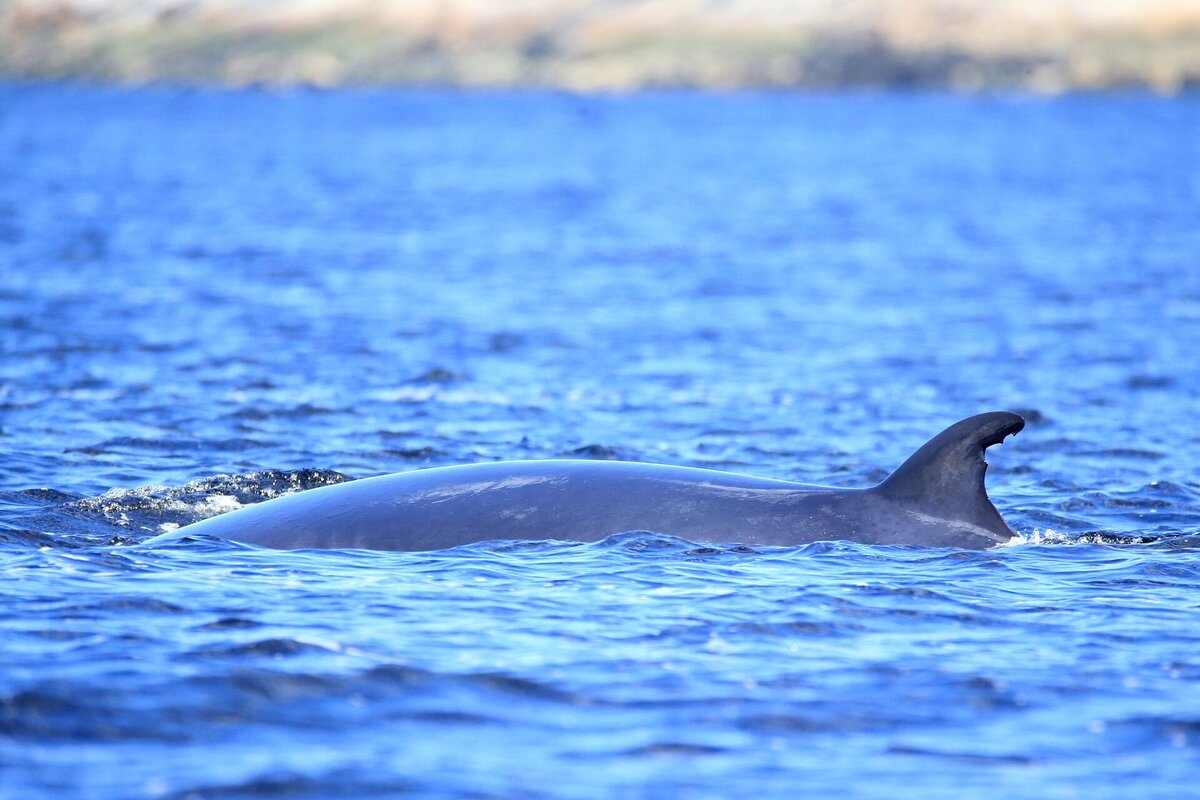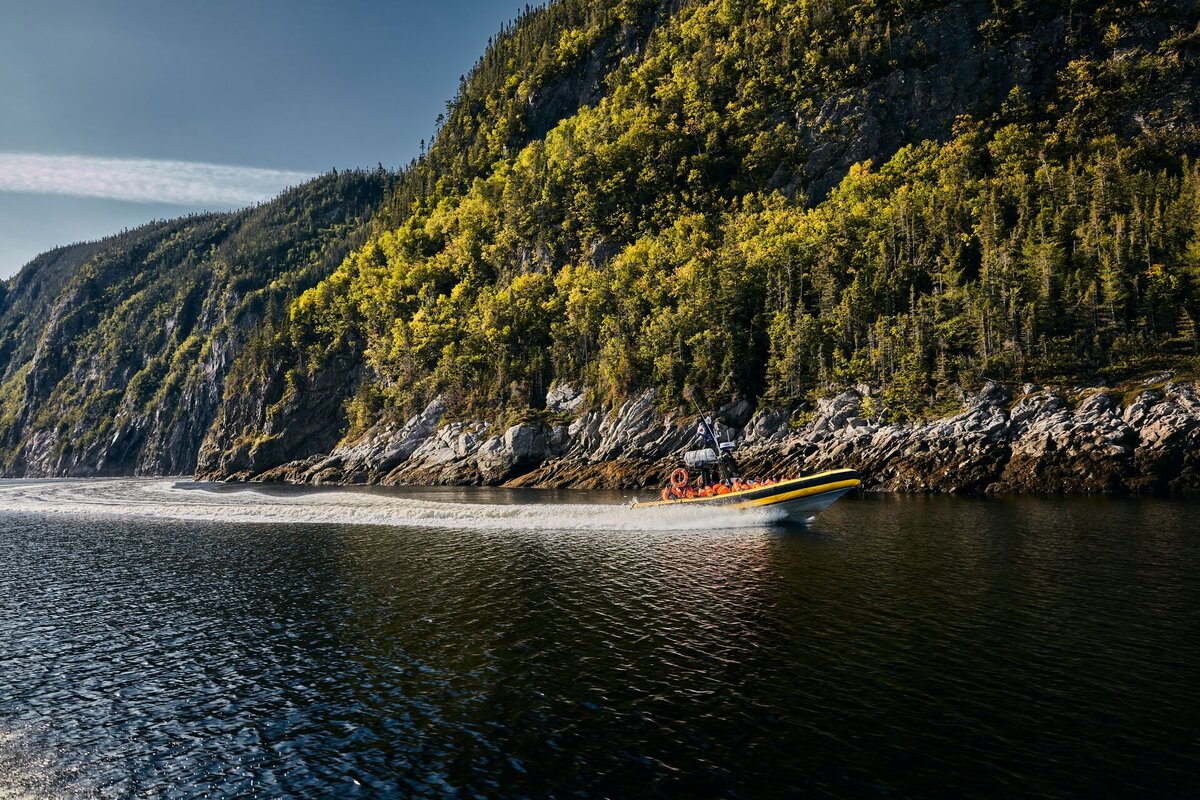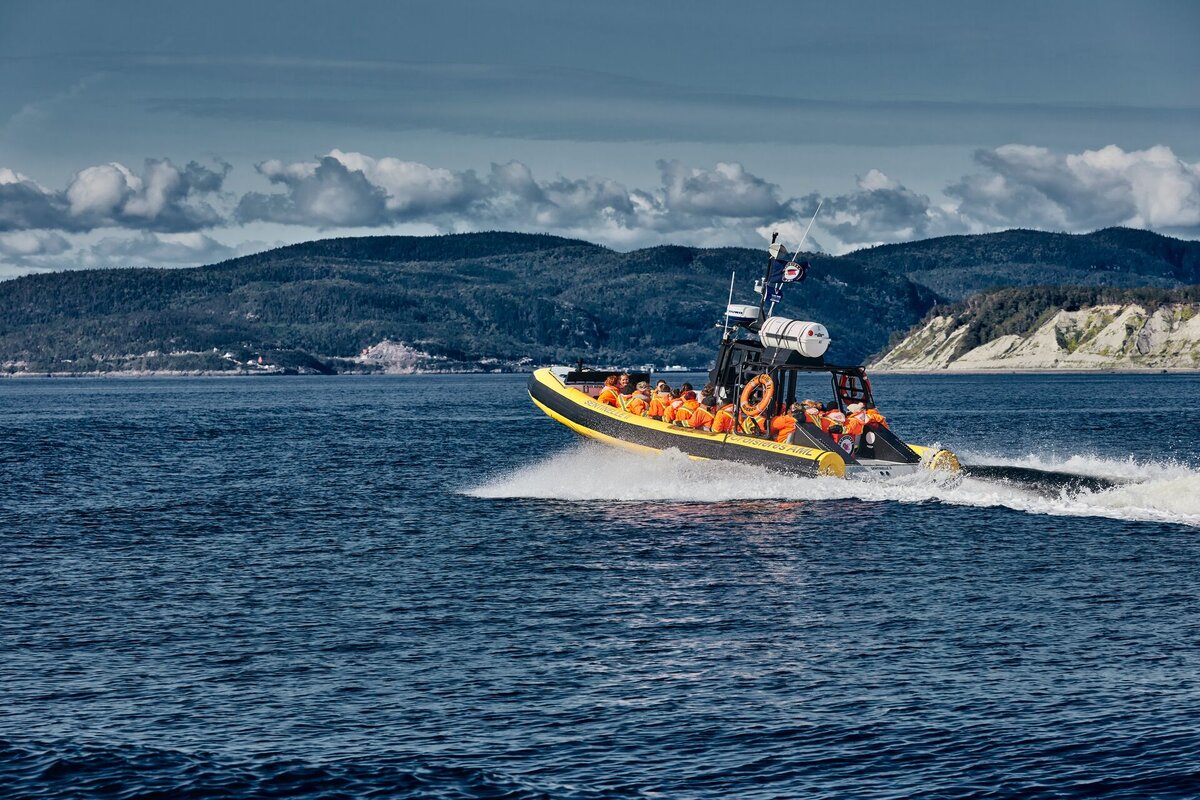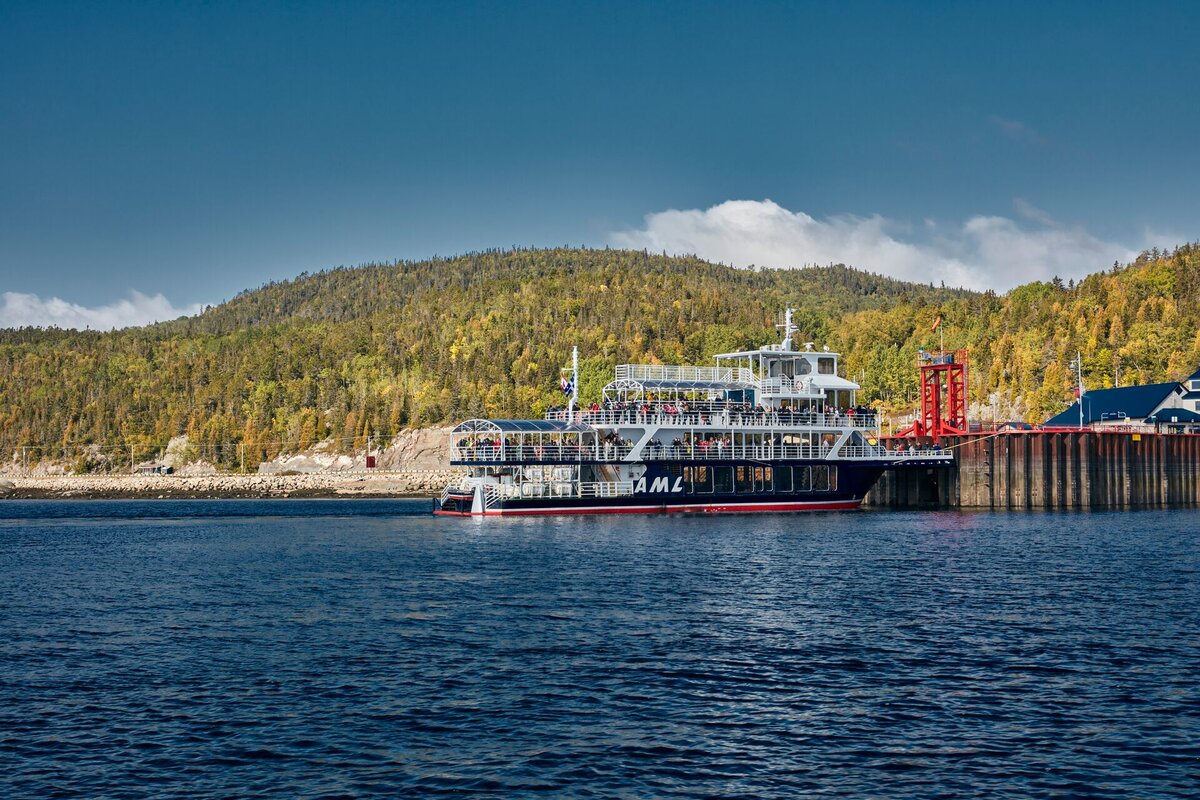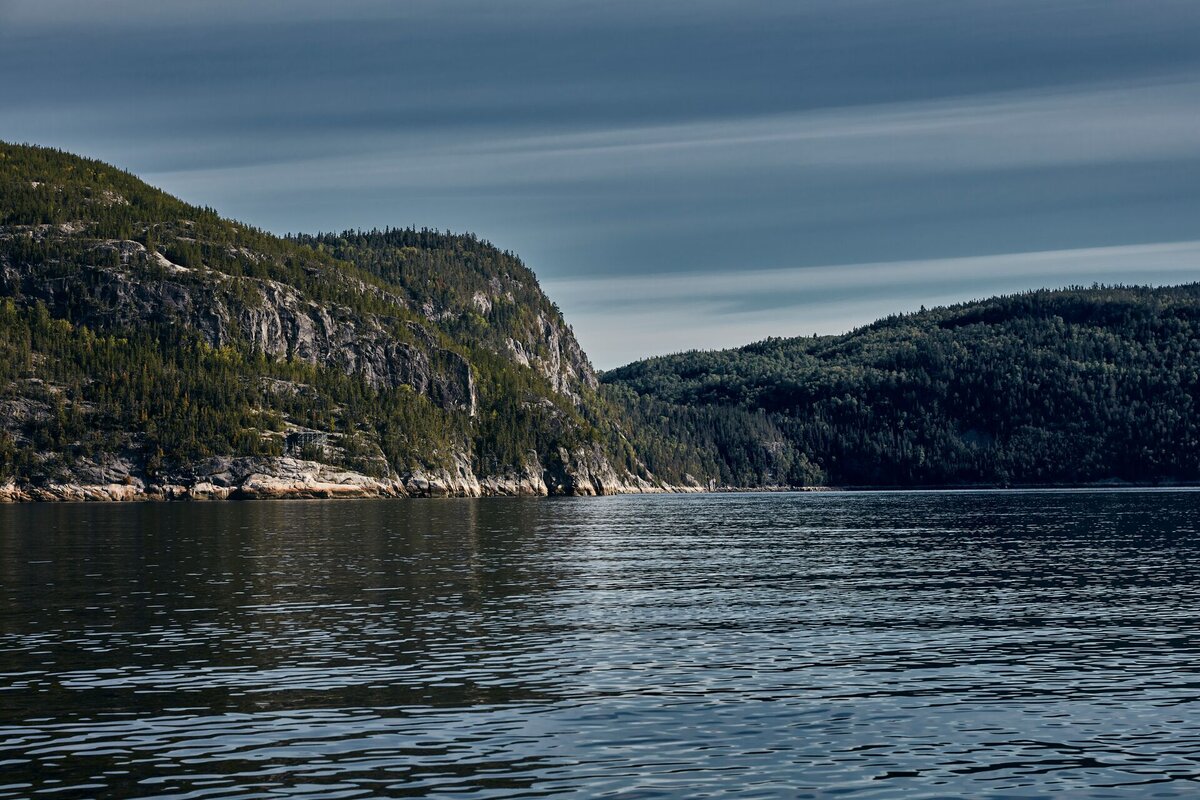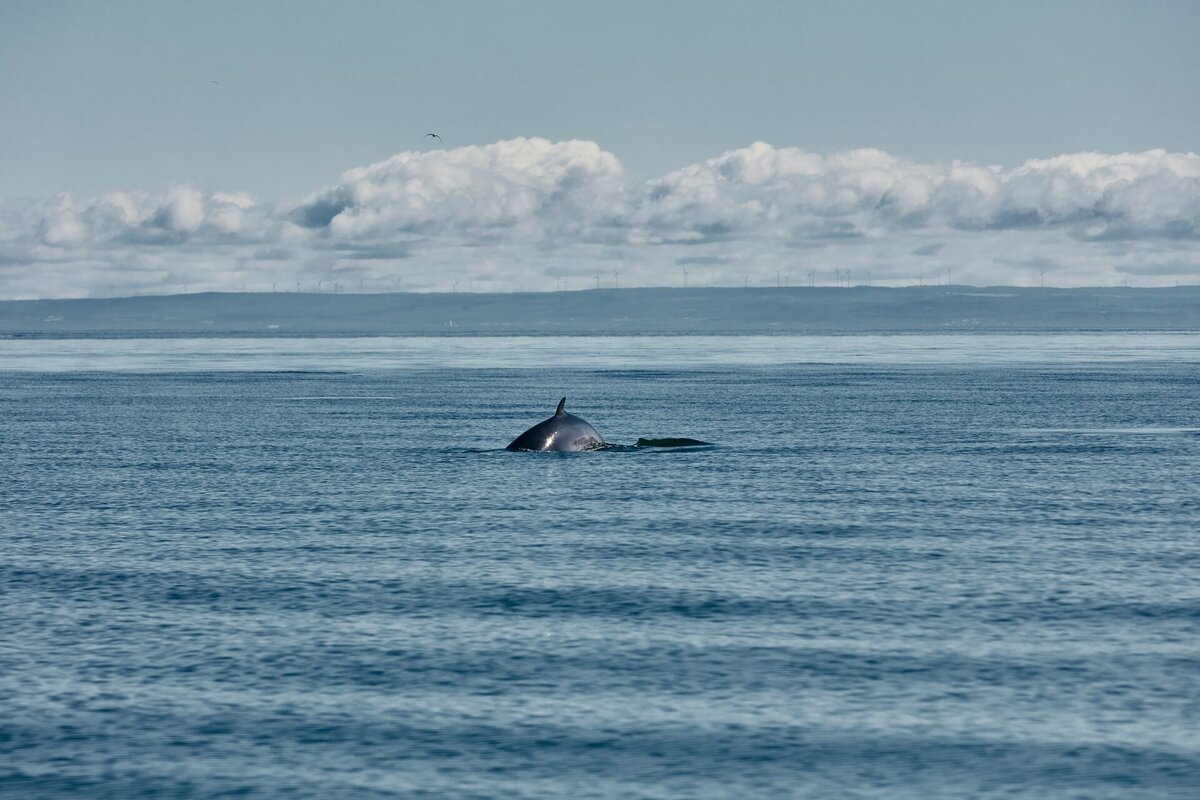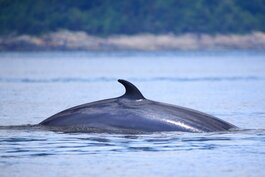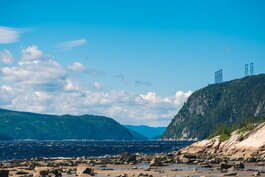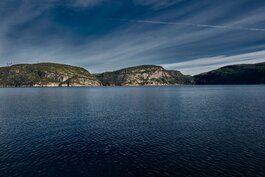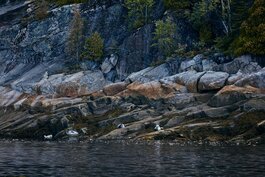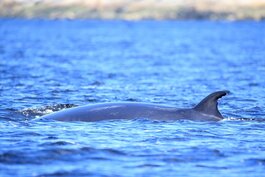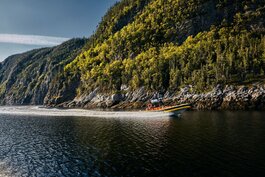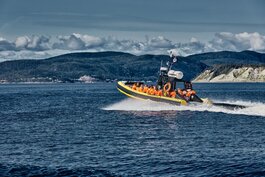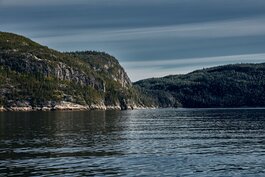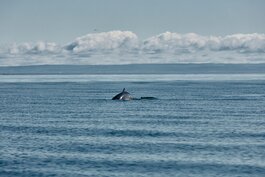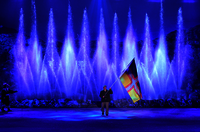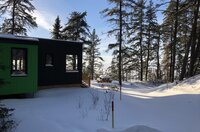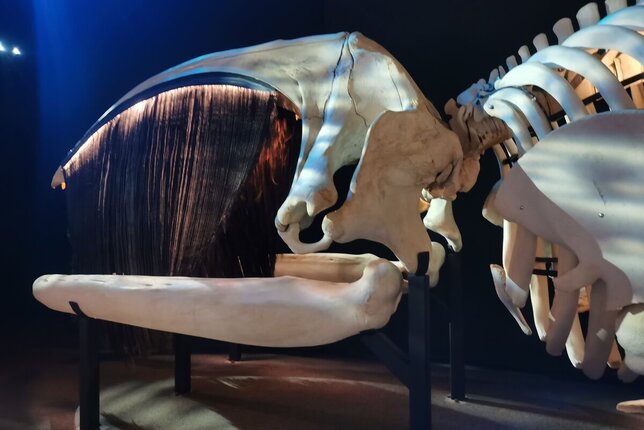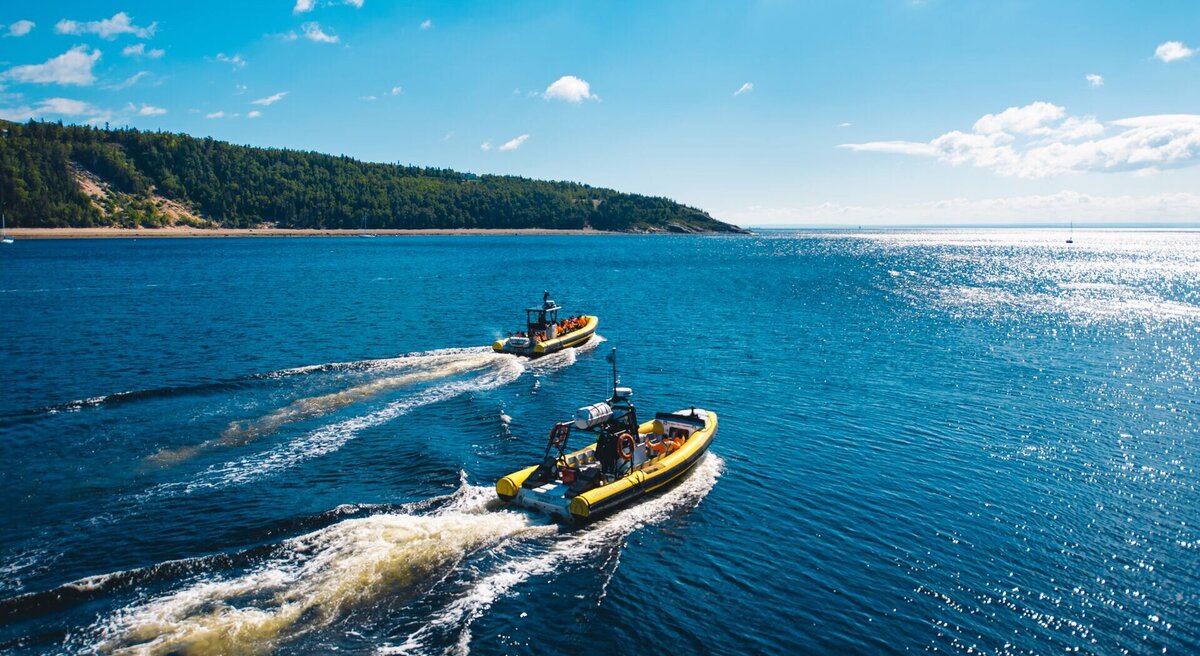
The Saguenay-Lac-Saint-Jean region is brimming with lakes and waterways to enjoy, and we're very proud of it. In addition to Lac Saint-Jean and the Saguenay Fjord, we mustn't forget to mention the St. Lawrence Estuary, which is right here in the region!
Would you like to discover everything this magnificent body of water has to offer? Whether by boat, zodiac, kayak, scuba-diving or even on foot, we have a thousand and one ways for you to experience the St. Lawrence in your own way. A number of museums and interpretation centers are located on the territory, so you can discover even more about the history and species that live there.
Ready to embark? All that's missing is you to complete the excursion!
Observe the marine life of the St. Lawrence
Saguenay-Lac-Saint-Jean's proximity to the St. Lawrence River gives us unbeatable views over this vast expanse of water. The heart of the river is also home to many marine species, which you'll be able to observe during your stay!
The Marine Protected Area allows you to be impressed by aquatic ballets and see these animals in their natural environment. Numerous companies offer boat or zodiac excursions for an extraordinary experience.
You're ready to meet the marine species. They're waiting for you to come and see them in all their colors and to discover their playground!
Discover the companies offering marine mammal watching tours
-
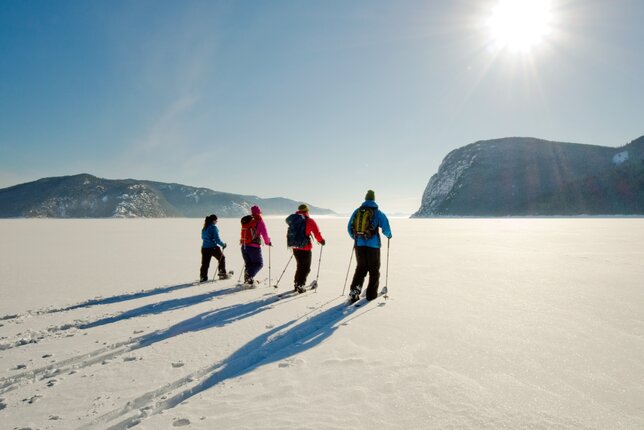 Parc national du Fjord-du-SaguenayRivière-Éternité+ 1 other coordinate
Parc national du Fjord-du-SaguenayRivière-Éternité+ 1 other coordinate -
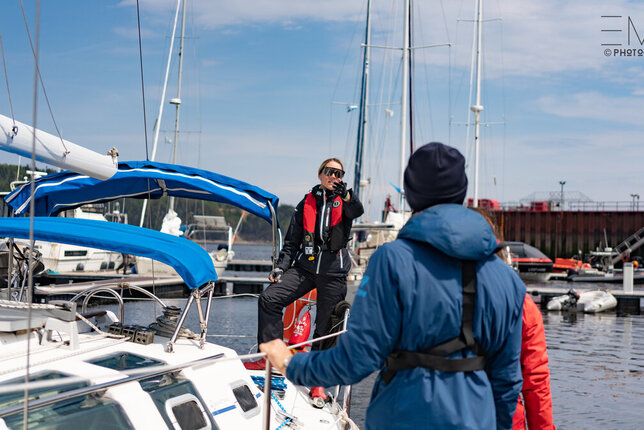 Voile MercatorL'Anse-Saint-Jean
Voile MercatorL'Anse-Saint-Jean -
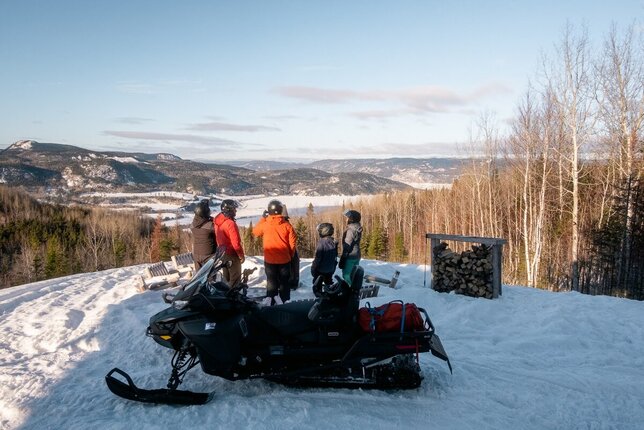 Saguenay AventuresRivière-Éternité+ 6 other contact details
Saguenay AventuresRivière-Éternité+ 6 other contact details -
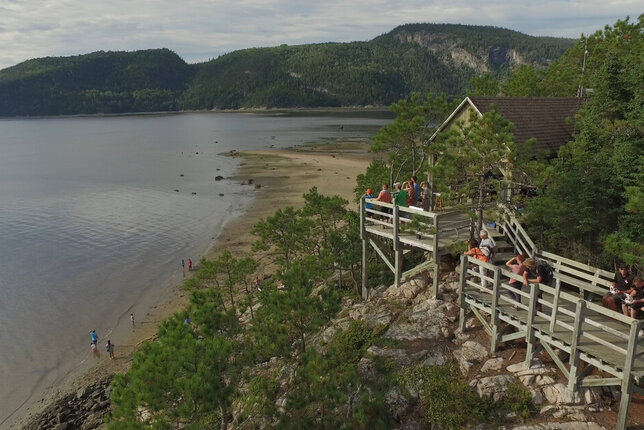 Parc marin du Saguenay-Saint-LaurentTadoussac+ 2 other contact details
Parc marin du Saguenay-Saint-LaurentTadoussac+ 2 other contact details -
 Croisières NeptuneBergeronnes
Croisières NeptuneBergeronnes -
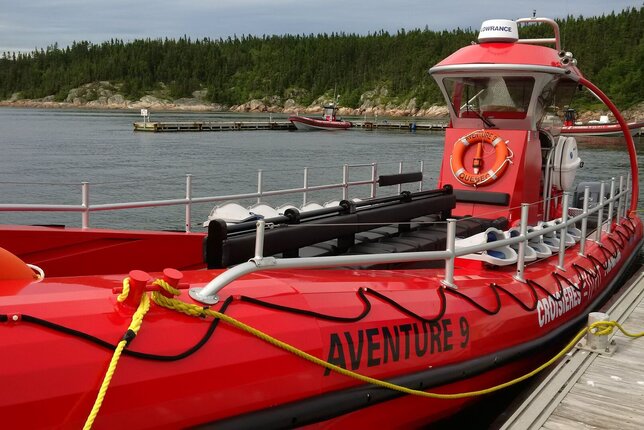 Vacances EssipitBergeronnes
Vacances EssipitBergeronnes -
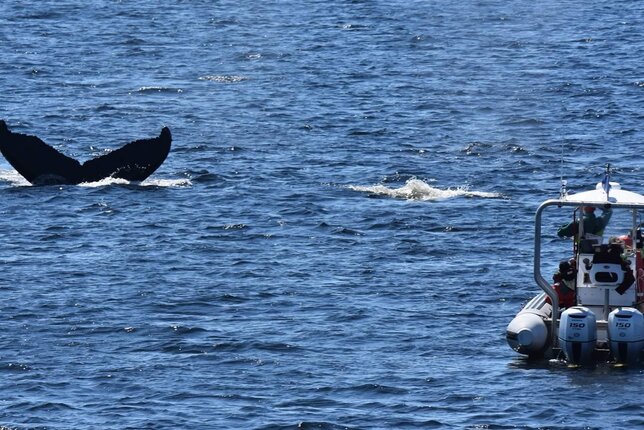 Du FleuveLes Escoumins
Du FleuveLes Escoumins -
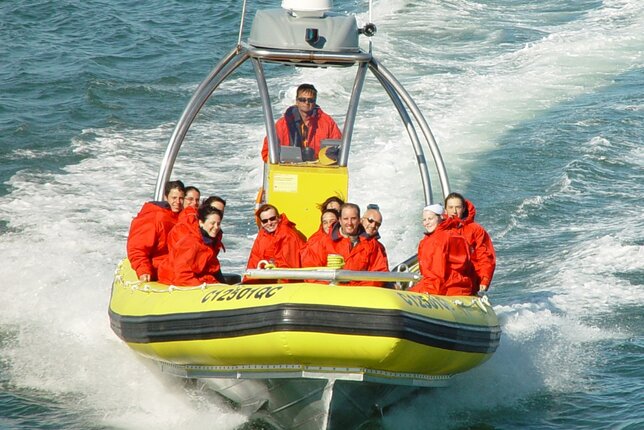 Croisière EscouminsLes Escoumins
Croisière EscouminsLes Escoumins

FAQ for your next observation
Peak whale-watching season is usually from July to mid-October. They arrive in late April and early May and leave in late October (except for the beluga, which stays all year round). At the height of summer, weather conditions are favorable and very pleasant. September and October are a good time of year, as the whales are generally numerous and very active.
Many factors can influence their presence (biology, currents, temperatures, tides, etc.) So it's difficult to guarantee the best time of year, but if you show up on these dates, your chances of seeing one are excellent.
Source : https://www.parcourscanada.com/blogue/observation-baleines-tadoussac/
For whales, time doesn't matter. They eat when they like and live at their own pace, making each day unique! According to scientists at GREMM (Groupe de Recherche et d'Éducation sur les Mammifères Marins), they are not active at one particular time of day than another. That said, some observation conditions are better than others.
It's almost guaranteed! It's quite rare not to see one, but of course it's never guaranteed. Whales are wild animals and the "aquarium" in which they live is very large.
As for ideal conditions, weather conditions (temperature, wind, rain) have little influence on the behavior of whales, which have to come to the surface to breathe anyway. Rather, they influence our ability to spot whales.
Ideal conditions would be a calm, windless day, so that white waves are not mistaken for beluga backs, a non-blinding sun (sunrise is good for spotting blowholes, but difficult for seeing beluga backs), clear weather and no fog.
Source : https://www.parcourscanada.com/blogue/observation-baleines-tadoussac/
Approach distances may vary according to the class of permit granted. Here are the main rules to observe when boating in the marine park (some exceptions apply):
- You must keep a distance of at least 400m at all times from endangered marine mammals (beluga, blue and right whales).
- Keep a minimum distance of 200m from other whales and seals.
- Never stop in the presence of beluga whales. Keep a distance of 5 to 10 knots until you are far enough away not to see them.
The Saguenay-St. Lawrence Marine Park Regulations govern activities at sea to protect marine mammals, including species at risk. Regardless of the type of craft (boat, sailboat, kayak, paddleboard, etc.) or activity (diving, fishing, swimming, etc.), you must know and respect the Regulations.
Source : https://parcmarin.qc.ca/protect/
It all depends on what you want to experience! Each boat has its own particularities and appeal.
Zodiac
- You'll have more thrills and be closer to the water
- Fewer tourists on board
- You can see all over the boat
- The zodiac goes faster and moves quickly to reach an observation area
- The whales seem more impressive, as the zodiac is closer to water level
Boat
- Move around the boat to observe from different view points
- Several services available on board (toilets, food purchases, etc.)
- In case of rain, the boat is covered to keep you dry
- Opportunity to see other historical sites during the cruise (depending on the company chosen)
To ensure that your cruise is well adapted to your group's needs, we recommend that you discuss any possible restrictions with the company you choose for your expedition.
Source : https://www.parcourscanada.com/blogue/observation-baleines-tadoussac/
To make your expedition as pleasant as possible, here are our tips:
- Dress warmly. It's always cold on the river, no matter how nice the weather! Depending on the season, bring a warm sweater, hat and gloves. The view will make you forget you ever had to dress that way, I promise!
- Bring your camera. If you're taking your cell phone, remember to bring a pouch to protect it from the water.
- Don't forget your sunglasses and sunscreen. Expeditions last several hours. The sun can be tiring on the eyes and hard on the skin.
- Binoculars. Marine mammals can stay well away from boats, so they'll make sure you don't miss a thing.
Source : https://www.parcourscanada.com/blogue/observation-baleines-tadoussac/
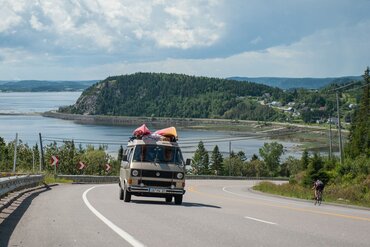
On the Route du Fjord
Take in the breathtaking scenery along the 235 km between the municipalities of Petit-Saguenay and Tadoussac.
On your way to your next adventure, discover the Route du Fjord!
Let's hit the road!Take this opportunity to cross the riverbank
The St. Lawrence has charmed you and you're asking for more. The fun doesn't have to end just yet. If you still have time to enjoy the fresh air of the St. Lawrence, why not combine it with a trip to the neighboring shore? N. M. Trans-Saint-Laurent offers a ferry service from Saint-Siméon to Rivière-du-Loup.
Whether you've come by car, motorcycle or even tent-trailer, the ferry will welcome you aboard! You can take a one-way trip, or disembark and return later in the day.
You can also enjoy the full cruise, making the round trip to appreciate the horizon to the full.
In search of knowledge?
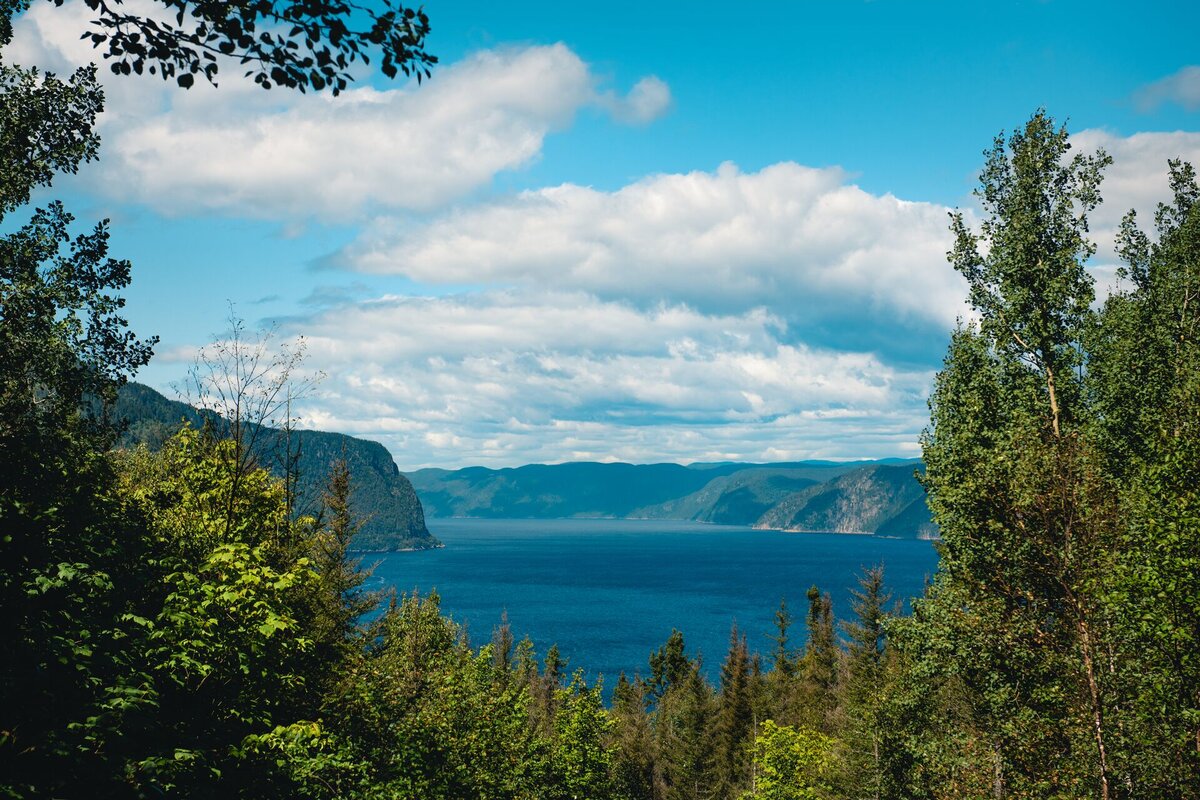
While the St. Lawrence River is an impressive sight to behold (and to revisit), it would be wrong to think that the territory of this natural wonder stops at just this stretch of water.
The St. Lawrence estuary, part of the Saguenay-St. Lawrence Marine Park, is a place where freshwater (from the fjord) and saltwater (from the river) mix. Due to this phenomenon, it is home to great biodiversity, with many species of whales, seals and birds travelling thousands of kilometers each year to reach it. In total, this marine protected area contains over 2,200 species.
To discover a new territory, it's imperative to pass through the waters. Human presence in the area dates back over 8,000 years. Let us take you on a journey through the history of hunter-fishermen, the first contacts between the First Nations and the French, the rise of maritime transport and the era of lighthouse keepers. Whether you're on the water during an expedition or in a museum, the interpreter-guides on hand can answer your questions and tell you more about the fascinating past of this land and sea.
Find out more about the companies offering these services
The air, the land and the sea: Saguenay–Lac-Saint-Jean is all these spheres coming together to create an incredible whole!
